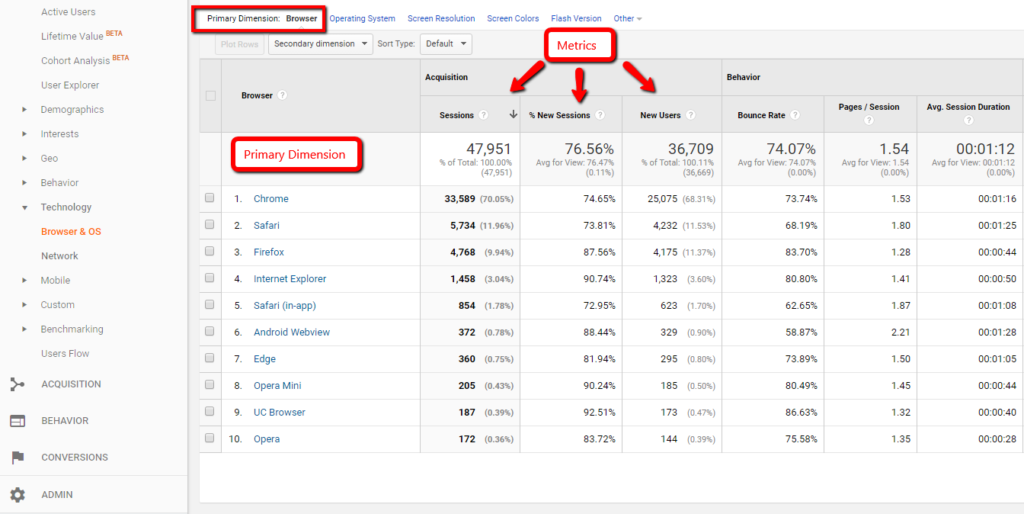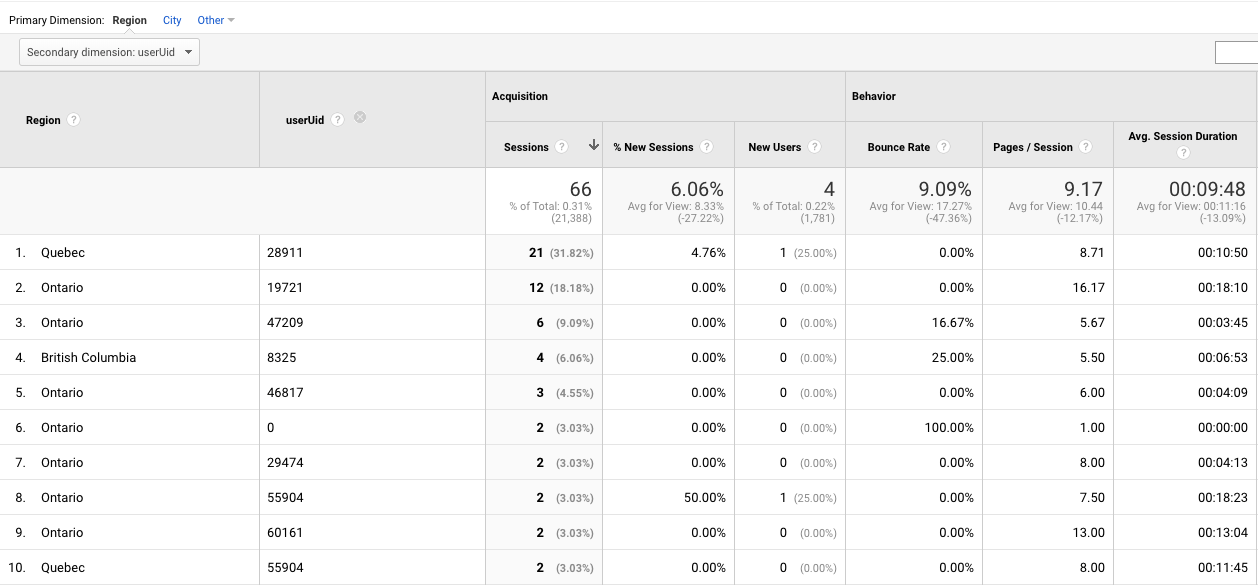Described: The Function and Definition of a 'Secondary Dimension' in Google Analytics
Described: The Function and Definition of a 'Secondary Dimension' in Google Analytics
Blog Article
Browsing the Midst of Second Dimension in Google Analytics: A Comprehensive Expedition on Its Functionality
In the world of digital analytics, the complexities of data interpretation often hold the secret to unlocking useful insights. Within the expansive toolkit of Google Analytics exists a feature that acts as a surprise treasure for those that look for a much deeper understanding of user habits and site performance. Secondary dimensions, though seemingly uncomplicated at initial glance, nurture a wide range of untapped possible waiting to be taken advantage of. As we start this trip to discover the nuanced functionality of second measurements, we will certainly discover exactly how this attribute can light up patterns, introduce connections, and eventually lead the way for informed decision-making in the digital landscape.
Understanding Second Dimensions in Google Analytics

Understanding exactly how additional dimensions job is critical for leveraging the complete power of Google Analytics. These measurements help you address extra intricate inquiries about customer actions and the performance of your web site content and advertising efforts. For example, you can make use of secondary measurements to analyze which devices or browsers are most typically used by site visitors that purchase, or to contrast the bounce rates of various traffic sources. By incorporating key metrics with secondary measurements, you can gain useful understandings that drive notified decision-making and optimization methods - what is a “secondary dimension” in google analytics?.
Leveraging Additional Measurements for Data Analysis
Building upon the fundamental understanding of how secondary measurements boost data evaluation in Google Analytics, the usage of these additional layers of information ends up being paramount in removing important insights for notified decision-making and optimization strategies. By leveraging additional dimensions, analysts can delve much deeper right into the performance metrics by including even more context to the key dimensions, thus discovering concealed patterns and relationships that may not be apparent initially look. This much deeper degree of analysis allows companies to better comprehend individual behavior, determine fads, and identify locations for renovation.
In addition, second measurements provide an even more detailed sight of the information, enabling segmentation based upon different parameters such as demographics, gadgets, web traffic resources, and more. This division promotes a more granular evaluation, making it possible for businesses to customize their campaigns and techniques to certain target market sections for improved targeting and personalization. Essentially, the calculated use secondary measurements encourages companies to make data-driven decisions that drive growth and success in the electronic landscape.
Advanced Methods for Secondary Dimension Execution
Checking out elaborate approaches to harness the complete capacity of additional dimensions in Google Analytics boosts the deepness and class of data evaluation for calculated decision-making. One sophisticated technique for executing second dimensions is using personalized measurements. By specifying customized measurements, customers can section data better to get more details understandings right into individual habits, such as tracking communications with certain aspects on a page or keeping track of the efficiency of a certain marketing project. Another advanced strategy is the use of regex (routine expressions) within second measurements. Regex permits for more effective and flexible pattern matching, allowing customers to develop intricate filters for data analysis. In addition, integrating second dimensions with sophisticated segments can provide a lot more granular insights by applying multiple layers of division to the information. This approach enables a deeper understanding of user actions based on various standards simultaneously. Implementing these advanced methods for second measurements in Google Analytics equips users to conduct extra innovative evaluation and make data-driven decisions with accuracy.
Interpreting Insights Through Secondary Dimensions

When translating understandings via secondary measurements, it is important to think about the context of the information and exactly how different dimensions communicate with each various other. For instance, understanding which specific traffic sources bring about greater conversion prices or recognizing which devices customers prefer for making acquisitions can give actionable insights for optimizing marketing projects and enhancing general internet site efficiency. By carefully taking a look at the information with additional dimensions in mind, organizations can make enlightened choices that drive purposeful results and improve their digital visibility.
Enhancing Efficiency With Secondary Dimensions

One key method to maximize performance with second dimensions is by segmenting information much more granularly. This enables you to isolate particular variables that might be affecting your metrics and gain a much better understanding of what see post drives success or failure in your electronic initiatives. By integrating additional dimensions such as 'tool classification' and 'touchdown page,' you can identify which tool types are most effective for specific touchdown pages, enabling you to customize your strategies accordingly.
Moreover, making use of additional measurements can help you identify patterns, patterns, and correlations that might not be apparent when analyzing data with key dimensions alone. This deeper level of evaluation can cause even more educated decision-making and ultimately improve the overall performance of your web site or electronic advertising and marketing projects.
Final Thought
To conclude, secondary measurements in Google Analytics play an important duty in enhancing data evaluation and giving deeper insights into website efficiency. By making use recommended you read of sophisticated methods and interpreting the data successfully, companies can optimize their strategies and boost total efficiency. Comprehending the performance of secondary dimensions is vital for making educated decisions and driving success in the digital landscape.
By leveraging additional dimensions, analysts can dive deeper into the performance metrics by adding even more context to the main dimensions, therefore uncovering hidden patterns and correlations that might not be apparent at initial glimpse. One sophisticated technique for executing secondary dimensions is the usage of personalized measurements.Having actually mastered sophisticated methods like customized dimensions and regex for additional dimension application in Google Analytics, the following essential action is translating the valuable insights derived via these advanced information segmentation techniques. Interpreting insights via second measurements involves analyzing the partnerships between the second and key measurements picked, revealing patterns, fads, and correlations that might not be immediately obvious when looking at the data in its totality.When interpreting understandings through additional measurements, it is necessary to take into consideration the context of the information and just how various dimensions communicate with each various other.
Report this page